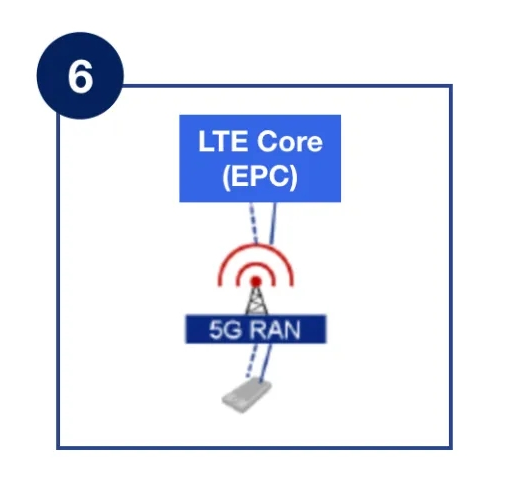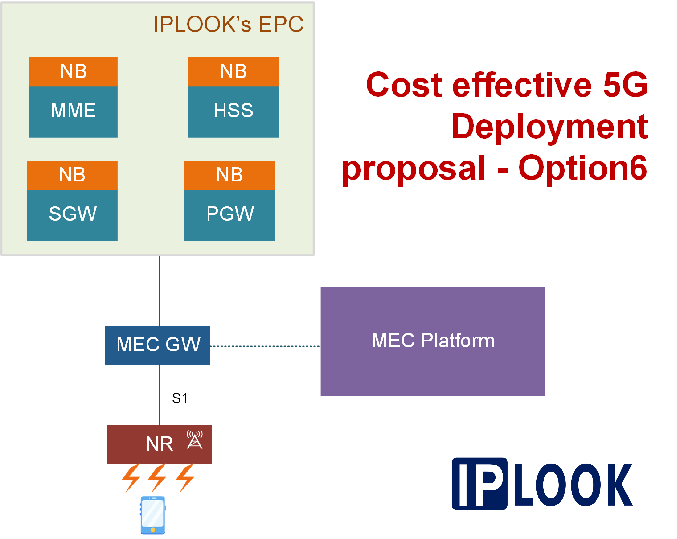Option 6 is also a Standalone (SA) deployment and is relevant in scenarios where the radio network has completely migrated to 5G NR, but it retains the EPC as the core network. Here the original EPC signaling interfaces (S1-U, S1-C) are used between the EPC and 5G NR, which means the 5G NR must support the previous core network signaling.
This is also a very unlikely option to be adopted by the operators as any operator who has an EPC will most definitely also have an LTE radio and they will not phase out LTE radio immediately and migrate the complete radio to 5G NR only.
Also, while the operators will gradually move to 5G NR, they will at the same time also migrate their core to 5GC making this deployment option highly unlikely to be used.

They believe that the best way forward could be “Option 6” which would use a fully functional 5G NR “Radio” catering to both data and signaling independently BUT connected to the EPC core. This could give the best cost advantages and “Early 5G Readiness”. The LTE EPC could be “Virtualized”and moved to a 5G core in time when the 5GC matures.

As for IPLOOK, we recommend Option 6 for Industrial Parks and Private Networks, for it is worth deploying for the following advantages:
▫ Cost effective
▫ Low latency
▫ Highspeed and bandwidth
▫ Deep coverage
▫ Deployment flexibility and a smooth evolution to 5G
IPLOOK develops ultra-mobile core network software technology that can be deployed in consumer, professional, government and enterprise scenarios. Deployment can be as a standalone network, or interconnected with existing network services to extend wireless services anywhere in the world.

